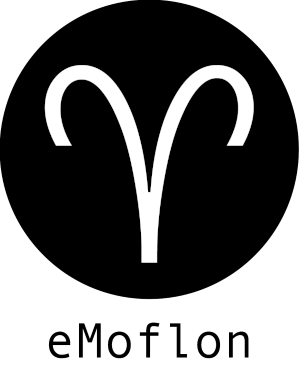eMoflon::IBeX

|
|---|
eMoflon::IBeX is an open source tool suite to implement incremental model transformations formally based on the notion of graph transformations. Graph transformations are a declarative and rule-based way to define how a graph (our model) changes. Usually, this is done by writing transformation rules that describe preconditions, i.e., patterns that state when a rule should be applied, and postconditions that state how the rule will change our model. eMoflon::IBeX then generates code that implements your rules ensuring that they are only applied on appropriate locations. In addition to that, we employ state-of-the-art incremental graph pattern matching techniques to react to model changes promptly and efficiently. Note that our tool is released as an Eclipse plugin and makes use of the Eclipse Modeling Framework (EMF) to design and visualize (meta-)models. Our tool comes with two main components, namely GT and TGG. The former lets you implement generic model transformations in a unidirectional way. The latter enables you to implement different bidirectional model transformations to restore consistency between two models from one sole specification, e.g., synchronisers and translators.
Feature Overview
- EMF-based
- Eclipse plugin
- Open source
- Unidirectional and bidirectional model transformations
- SmartEMF – High-performance EMF reimplementation complying with EMF interfaces
- HiPE – a highly parallelized state-of-the-art graph pattern matching engine
- (Optional) A selection of different Integer Linear Problem (ILP) solvers to guarantee optimality
eMoflon::IBeX-GT
eMoflon::IBeX-GT lets you implement unidirectional model transformations by specifying declarative graph transformation rules. These rules consist of (1) a pattern that has to be found in a model for the rule to be applicable and (2) the actions that are to be performed when this pattern is matched, e.g., creating and deletings elements or modifying their attributes. Using the rule specification, eMoflon::IBeX-GT generates a Java API to execute the model transformations, while guaranteeing that each rule acts according to its specification. Besides that, you can also use eMoflon::IBeX-GT to search for patterns in a model without applying any changes to them.
Feature Overview
- Textual language for defining graph patterns and graph transformation rules
- Automatic creation of a Java API implementing your patterns and rules
- Complex attribute conditions
- Arithmetic expressions
- Specifying complex preconditions by combining patterns (Negative and Positive Application Conditions)
- Stochastic graph transformations where each rule executes according to a custom propability function
eMoflon::IBeX-TGG
Warning
The development of eMoflon::IBeX-TGG was discontinued in 2024.
Triple Graph Grammars (TGGs) are a declarative and rule-based technique to specify bidirectional model transformations. Basically, this means that TGGs are used to express a consistency relationship between two models. This relationship in the form of a set of grammar rules is then automatically transformed to obtain different consistency restoring operations such as translators or synchronizers. Based on the formal graph transformation framework, TGGs provide strong guarantees regarding correctness.
Feature Overview
- Textual language for defining TGGs
- Automatic creation of a Java API implementing your TGG
- Homogeneous and heterogeneous transformations
- Complex attribute conditions
- Least-change propagations (only necessary modifications are performed during synchronisation)
- State-of-the-art conflict detection for concurrent changes
- (Optional) Support for Integer Linear Programming (ILP) to find optimal solutions
Operational Strategies
- Model Generation Generate pairs of consistent models
- Batch Translation Translate a model to obtain the opposite one
- Sequential Synchronisation Changes are propagated from one model to another without conflict detection
- Concurrent Synchronisation Synchronisation between two models with conflict detection
- Consistency Check Determine which elements between two models correspond to another
- Check Only Determine whether a pair of models is consistent w.r.t. a TGG
Download
Check out our download page to download latest versions of eMoflon::IBeX.
Getting Started
Check out our getting started page to get started with eMoflon::IBeX.
Development
Check out our development page to set-up your eMoflon::IBeX development workspace.
Support
If you have any problems or questions use our eMoflon::IBeX issue tracker.
